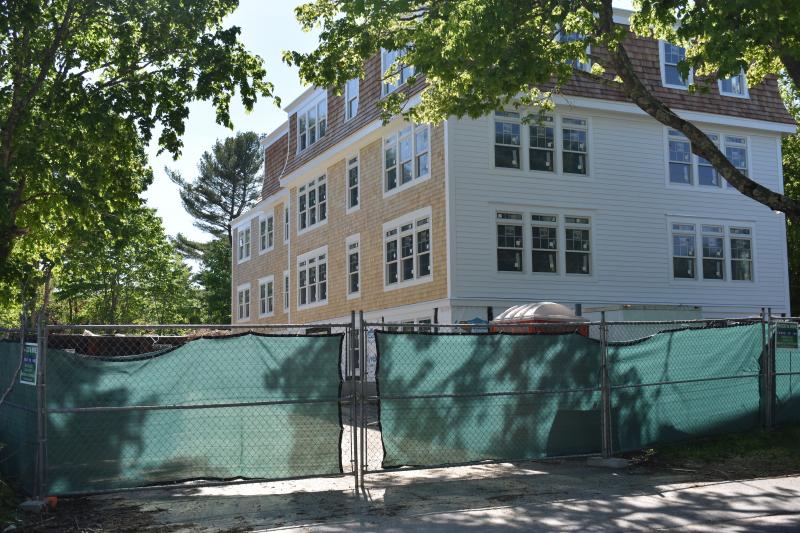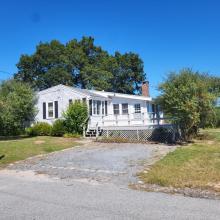Construction of controversial condo halted
Construction of a controversial condominium building on Front Street has stalled, after an abutter submitted documentation stating that construction was occurring outside of the original building's footprint.
Marion Building Commissioner Scott Shippey ordered a cease-and-desist on construction at 324 Front Street, owned by developer Christian Loranger, on May 10.
Loranger is attempting to construct a four-unit condominium building on the property. He ran into difficulties with abutters and neighbors when he originally came before Marion's Zoning Board in April of last year, seeking to demolish the house on the property. In its place, he sought to build a four-unit condo building that abutters worried would have a negative impact on the village due to its larger size.
The building permit for the four-unit structure was granted by Building Commissioner Scott Shippey on November 20. The Zoning Board of Appeals ruled that the project could proceed, according to a town bylaw, as long as it had the same footprint and "volume" of the previous building.
Documents filed with the Building Department by abutter Peter Douglas earlier this month, however, state that the volume of the new construction may be larger than originally stated in the permit application that Loranger filed with the town. Douglas argues that the information about the previous building's total footprint and volume that Loranger gave to the town was erroneous, and thus, he was in violation of the town's bylaws.
"Additional information and documentation was submitted to this department on May 4...containing affidavits indicating the nonexistence of a full basement under the southwest section of the previous building and new volume calculations by a registered professional engineer," Shippey wrote in a cease-and-desist order addressed to Loranger.
In reviewing the documents submitted by Douglas, members of the Planning Board noted that the dimensions of the new building did seem to be different from the building that was demolished.
The board said: "In our opinion, the new building configuration is substantially more detrimental than the existing nonconforming structure to the neighborhood."
Included in the documentation filed by Douglas is a report from engineering firm N. Douglas Schneider & Associates, which performed a review of the current structure.
Firm representatives wrote that they found discrepancies between the size of the previous building as reported by the Board of Assessors and the size of the previous structure as reported by Romanelli Associates, the engineering firm Loranger used in his permit application.
According to N. Douglas Schneider and Associates, Romanelli associates stated that the previous building's total volume is 43 percent larger than what Marion's assessors had on record for the structure.
The term "volume" is causing some hassle in the case, because Marion's bylaws do not make it clear exactly how the volume of a building is calculated, nor is there a definition of what "volume" is precisely. There is no indication of how Romanelli Associates representatives calculated total structure volume Loranger's permitting application.
Planning Board members recommended to the Zoning Board that it treat volume as the "above-ground exterior volume of the previously existing structure."
Additionally, Planning Board members added, the bylaw that allowed Loranger to build within the same footprint and volume may not apply to his project. Planning Board members added that the bylaw under which Loranger was approved for construction was intended to expedite the reconstruction of houses or buildings damaged in a catastrophic event, such as a hurricane or a fire.
"The contractor interpreted this section of the bylaw to mean that by demolishing the existing non-conforming structure, he could replace the structure with a structure of the same area and volume," members of the Planning Board wrote. "While the language of the bylaw is not very clear...this appears to be an inappropriate use of the intent of the bylaw."
Loranger will now have to address the issue with the Zoning Board of Appeals or settle the disagreement in court.














